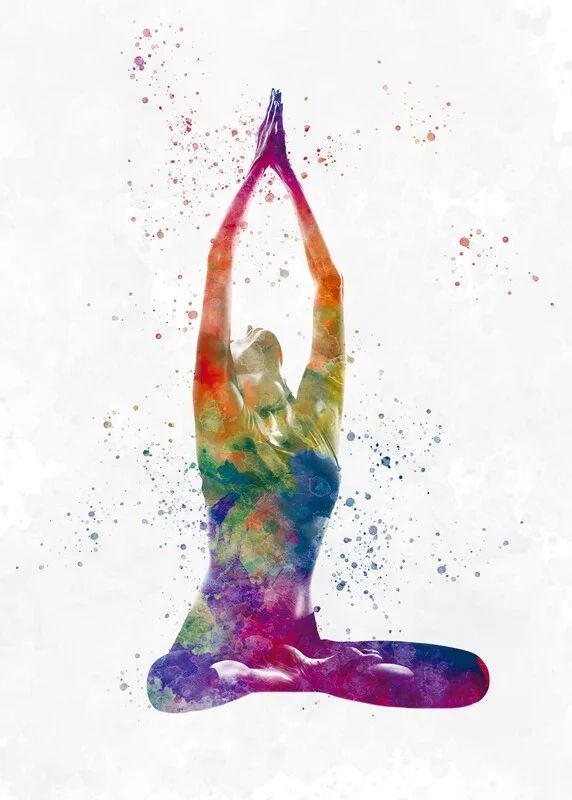Kapalbhati for Health: Types, Benefits, and Correct Practice 🧠
March 7, 2025 | by paruli6722@gmail.com

Kapalbhati Pranayama: A powerful yogic breathing technique for detoxification, weight loss, and mental clarity. Learn its types, benefits, and correct practice.
📅 What is Kapalbhati?

Kapalbhati is derived from two Sanskrit words: “Kapal” meaning skull and “Bhati” meaning shining or illuminating. Thus, Kapalbhati is a practice that purifies the mind and body, leading to a radiant and healthy life. It primarily focuses on forceful exhalation, which helps in cleansing the respiratory system and improving oxygen supply to the brain.
💪 Types of Kapalbhati Pranayama
There are three main types of Kapalbhati, each with unique benefits:
1. Vatakrit Kapalbhati (Air Cleansing Kapalbhati) 🌬
Technique:
- Sit in a comfortable posture (Padmasana, Sukhasana, or Vajrasana).
- Take a deep breath and forcefully exhale through the nose.
- Allow inhalation to happen naturally.
- Repeat the process continuously for 30-50 times (1 cycle).
Benefits:
- 🌟 Improves lung function and enhances oxygen intake.
- 🌟 Detoxifies the body by eliminating carbon dioxide and toxins.
- 🌟 Boosts metabolism, helping in weight loss.
- 🌟 Reduces stress, anxiety, and mental fatigue.
2. Bhramari Kapalbhati (Humming Bee Kapalbhati) 🐝
Technique:
- Perform Kapalbhati while producing a humming sound like a bee.
- This vibration helps in calming the nervous system and improving concentration.
Benefits:
- 🌟 Helps in reducing migraine and headache.
- 🌟 Alleviates depression and anxiety by soothing the brain.
- 🌟 Improves sleep quality and enhances focus.
3. Jal Kapalbhati (Water Cleansing Kapalbhati) 💧
Technique:
- Performed while submerged in water, where water is taken in through the nose and expelled through the mouth.
- This type is used for deep cleansing of the nasal passages.
Benefits:
- 🌟 Clears sinuses, nasal congestion, and throat infections.
- 🌟 Enhances respiratory function and removes toxins from the lungs.
- 🌟 Strengthens the nervous system and improves clarity of thought.
🔄 Correct Way to Perform Kapalbhati Pranayama
Follow these step-by-step instructions for an effective Kapalbhati practice:
🚶 Choose the Right Place and Time
- 🌟 Practice in a well-ventilated area with fresh air.
- 🌟 Early morning on an empty stomach is the best time.
- 🌟 Maintain a straight posture while sitting.
🧘️ Sit in the Correct Posture
- 👉 Sit in Padmasana, Sukhasana, or Vajrasana.
- 👉 Keep your spine erect and shoulders relaxed.
- 👉 Place hands on knees in Gyan Mudra.
💪 Begin the Practice
- 👉 Take a deep breath in.
- 👉 Forcefully exhale through the nose while pulling the navel inwards.
- 👉 Let inhalation happen naturally.
- 👉 Repeat the cycle for 30-50 times.
⏰ Duration
- 👉 Beginners: 1-2 minutes (30-50 breaths)
- 👉 Intermediate: 5-7 minutes
- 👉 Advanced: 10-15 minutes
🚫 Precautions and Contraindications
- ❌ Do not practice on a full stomach.
- ❌ Avoid excessive force while exhaling.
- ❌ People with high blood pressure, heart issues, epilepsy, or pregnancy should consult a doctor before practicing.
- ❌ If you feel dizzy or fatigued, stop immediately and rest.
🏡 What to Do After Kapalbhati?
- 🌟 Sit quietly in meditative pose for a few minutes.
- 🌟 Practice Anulom Vilom for enhanced benefits.
- 🌟 Drink warm water to flush out toxins.
Here are some frequently asked questions (FAQs) related to Kapalbhati Pranayama, along with their answers:
1. What is Kapalbhati Pranayama?
Answer: Kapalbhati is a yogic breathing technique that involves forceful exhalations and passive inhalations to detoxify the body, improve lung capacity, and enhance mental clarity.
2. What are the benefits of Kapalbhati?
Answer: Kapalbhati helps in weight loss, detoxifies the body, improves digestion, enhances lung function, boosts mental clarity, and reduces stress.
3. How many types of Kapalbhati are there?
Answer: There are three types:
- Vatakrit Kapalbhati – Standard Kapalbhati with forceful exhalation.
- Bhramari Kapalbhati – Involves a humming sound for mental relaxation.
- Jal Kapalbhati – Performed in water for deep nasal cleansing.
4. Who should not practice Kapalbhati?
Answer: People with high blood pressure, heart disease, epilepsy, pregnancy, or recent abdominal surgery should avoid Kapalbhati or consult a doctor before practicing.
5. How long should one do Kapalbhati?
Answer: Beginners can start with 1-2 minutes, gradually increasing to 5-10 minutes per session based on their comfort level.
6. Can Kapalbhati help in weight loss?
Answer: Yes, Kapalbhati increases metabolism, burns calories, and reduces belly fat when practiced regularly along with a healthy diet and exercise.
7. Can Kapalbhati cure diseases?
Answer: Kapalbhati is beneficial for respiratory issues, digestive problems, diabetes, and stress management, but it should not replace medical treatment for serious conditions.
8. When is the best time to do Kapalbhati?
Answer: Early morning on an empty stomach is the best time for maximum benefits. However, it can also be done 3-4 hours after meals.
9. Should Kapalbhati be done before or after meditation?
Answer: Kapalbhati is best done before meditation, as it clears the mind, energizes the body, and prepares for deep focus.
10. Can Kapalbhati be done during periods?
Answer: It is generally advised to avoid Kapalbhati during menstruation, as the forceful abdominal movements may cause discomfort.
🔍 Conclusion
Kapalbhati Pranayama is a powerful detoxifying breathing technique that enhances physical, mental, and emotional well-being. Whether you aim to lose weight, improve respiratory health, or attain mental peace, regular practice of Kapalbhati can bring transformative results. However, it is essential to follow the correct technique and take necessary precautions for maximum benefits.
Are you ready to transform your health with Kapalbhati? Let us know in the comments! 😊
RELATED POSTS
View all


